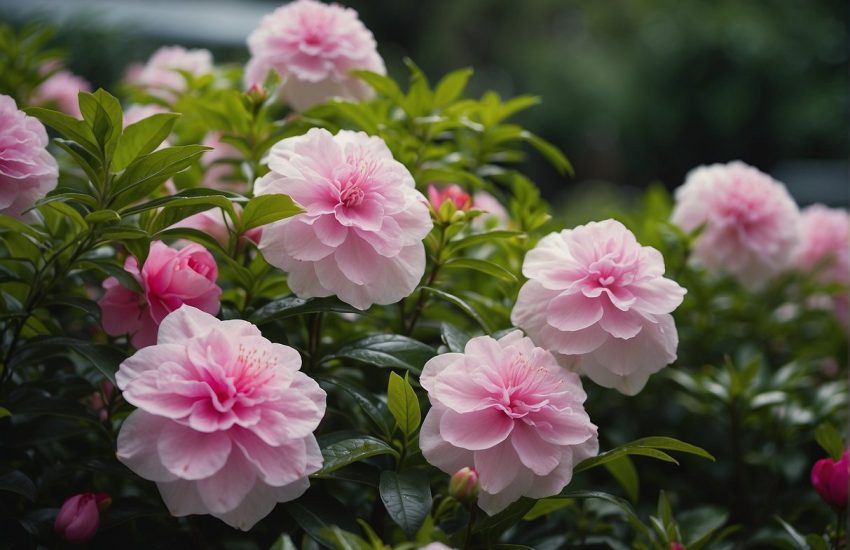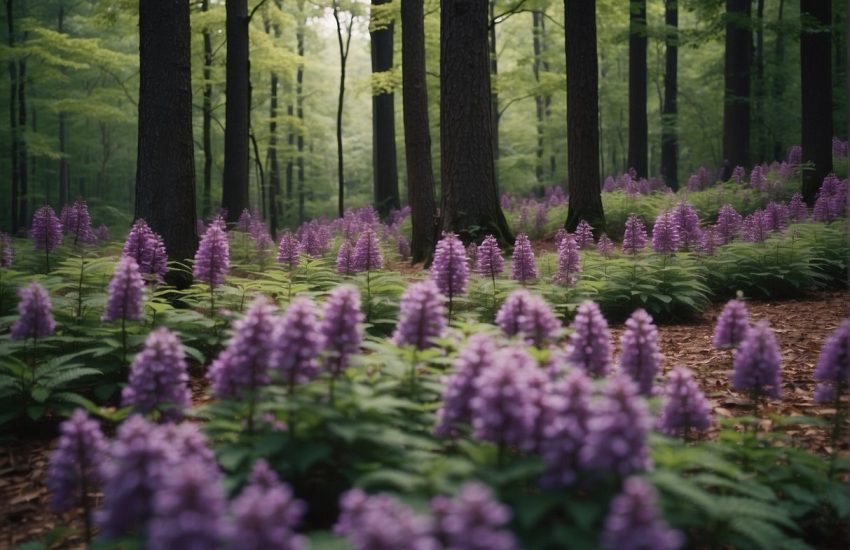Where Does Valerian Grow Best: Ideal Growing Conditions for Valerian Plant
Valerian, also known as Valeriana officinalis, is a perennial flowering plant that has been used for centuries as a natural remedy for various ailments. The plant is native to Europe and parts of Asia, but it has been introduced to North America and other parts of the world. Valerian is particularly known for its sedative properties, which make it a popular choice for those seeking natural alternatives to prescription sleep aids.
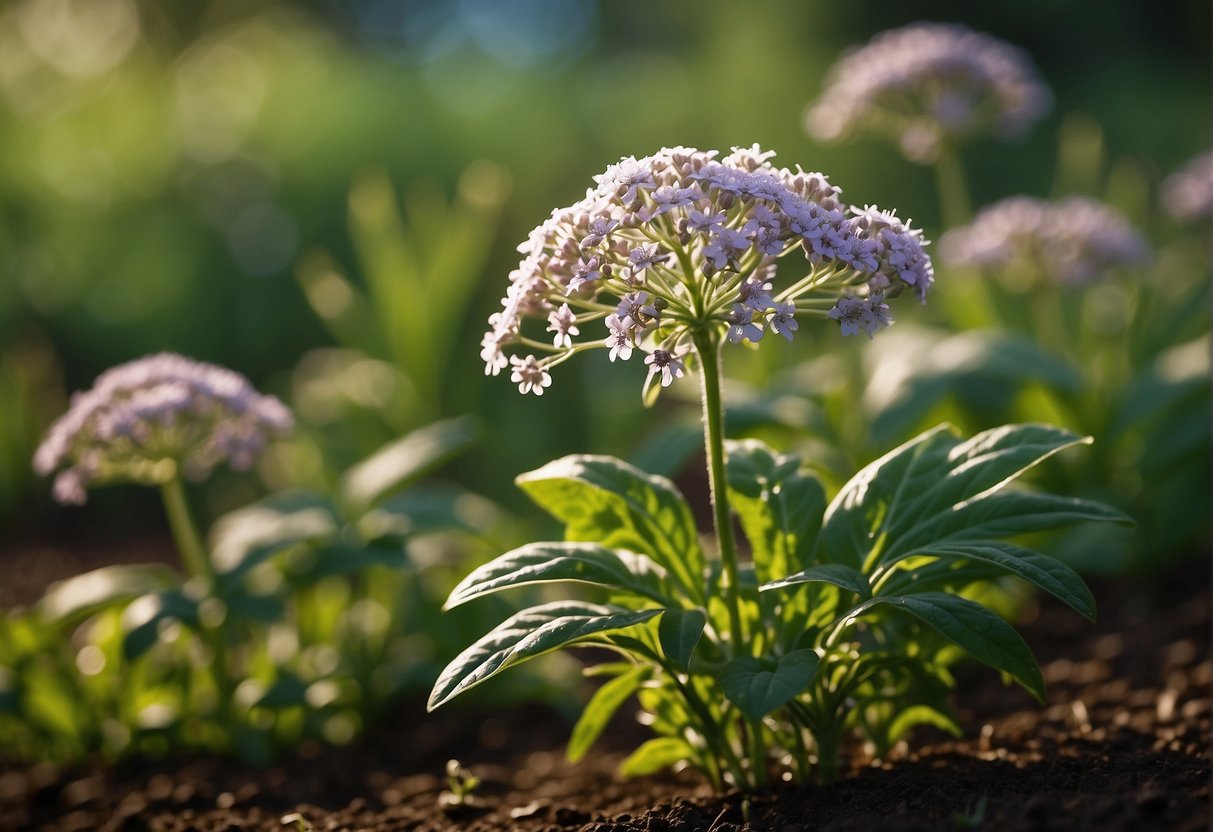
When it comes to growing valerian, there are a few factors to consider. Valerian prefers cooler temperatures and moist, well-draining soil. It can be grown in full sun or partial shade, but it tends to do best in areas with some shade. The plant can be grown from seed or propagated through root cuttings, and it typically reaches maturity in two to three years. While valerian is not a particularly difficult plant to grow, it does require some care and attention to ensure that it thrives.
Valerian Basics
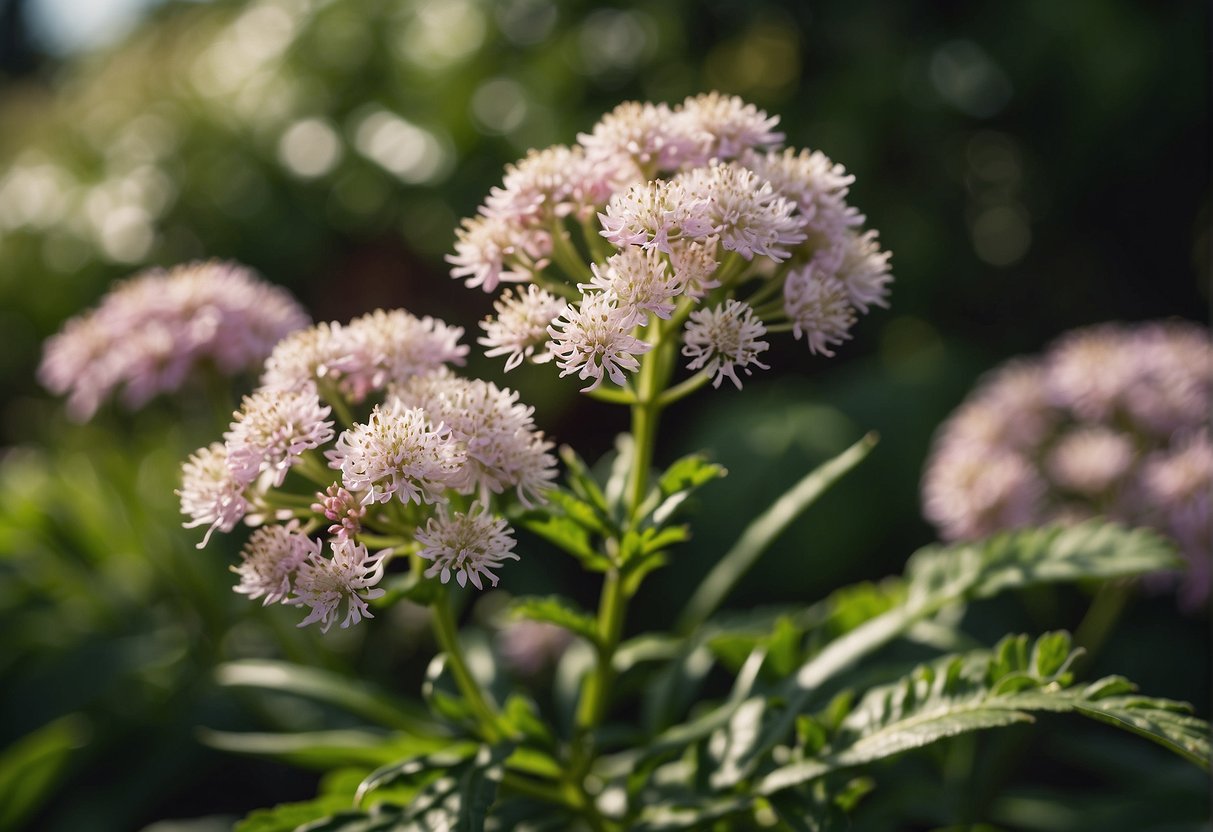
Valerian (Valeriana officinalis) is a hardy perennial herb that is native to Europe and parts of Asia. It is also known as garden valerian, common valerian, and all-heal. Valerian is a popular herb that has been used for centuries for its medicinal properties.
Botanical Profile
Valerian is a tall, erect plant that can grow up to 5 feet tall. It has a thick, fleshy root system and a hollow stem. The leaves are dark green and divided into pairs of leaflets. Valerian produces small, fragrant flowers that are either white or pink. The flowers bloom in the summer months and are followed by small, brown fruits.
Growing Seasons
Valerian grows best in cool, moist climates and prefers full sun to partial shade. It can be grown in most types of soil but prefers fertile, well-drained soil. Valerian can be propagated by seed or by dividing the root system.
Valerian is a hardy plant that can survive in temperatures as low as -30°F. It is best to plant valerian in the spring or fall. In the spring, valerian should be planted as soon as the soil can be worked. In the fall, valerian should be planted at least 6 weeks before the first frost.
Valerian is a low-maintenance plant that requires little care once established. It should be watered regularly but not over-watered. Valerian should be fertilized once a year in the spring with a balanced fertilizer.
In conclusion, Valerian is a hardy perennial herb that grows best in cool, moist climates. It can be grown in most types of soil and is easy to care for once established. Valerian is a popular herb that has been used for centuries for its medicinal properties.
Optimal Growing Conditions
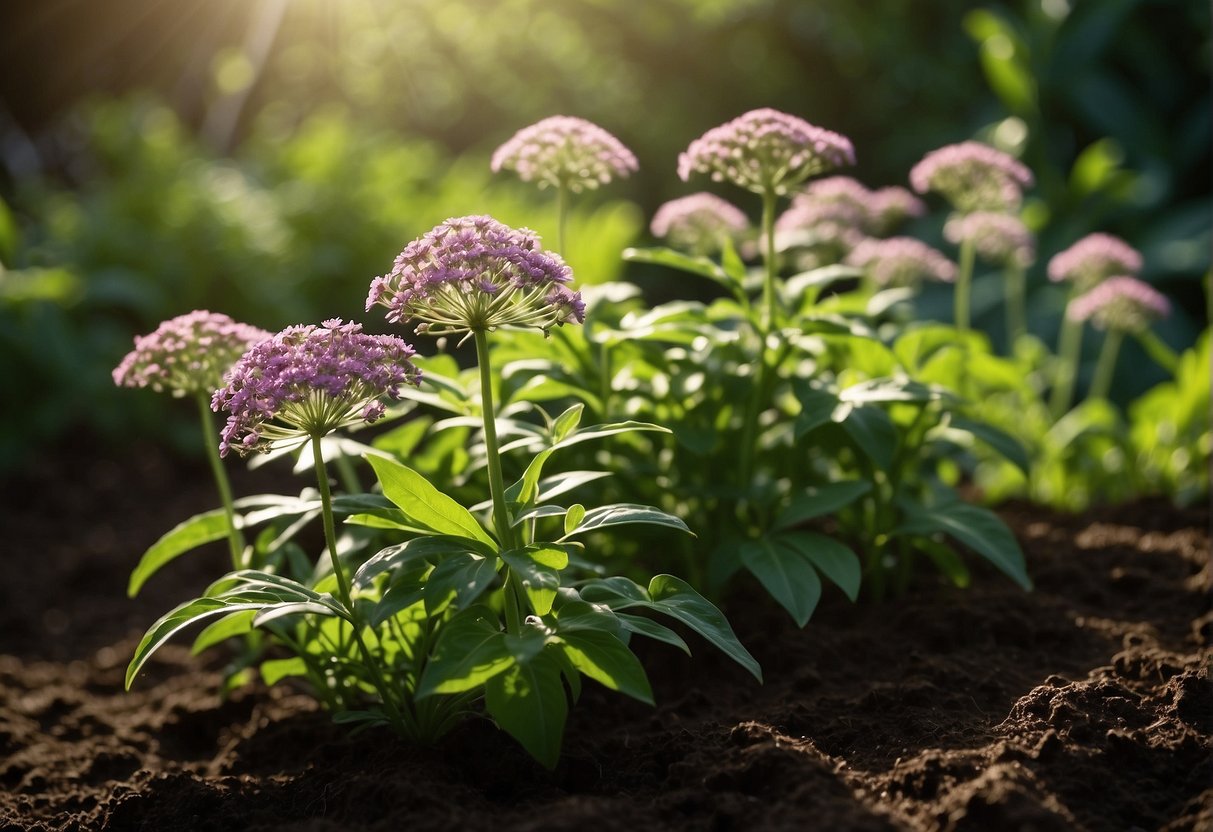
Valerian is a hardy plant that can grow in a variety of conditions, but there are certain optimal growing conditions that can help it thrive. This section will cover the soil requirements, sunlight and shade, and watering and moisture needs for growing valerian.
Soil Requirements
Valerian grows best in well-drained, moist soil that is rich in organic matter. The pH level of the soil should be between 5.5 and 7.0, which is slightly acidic to neutral. It is important to ensure that the soil has good drainage, as valerian does not tolerate waterlogged soil. Adding compost or well-rotted manure to the soil can help improve its fertility and structure.
Sunlight and Shade
Valerian prefers full sun to partial shade, but it can tolerate some afternoon shade in hotter climates. In areas with hot summers, it is best to provide some shade during the hottest part of the day. Valerian can also grow well in areas with dappled shade, such as under trees.
Watering and Moisture
Valerian requires regular watering to keep the soil moist, but not waterlogged. It is important to ensure that the soil has good drainage, as valerian does not tolerate waterlogged soil. Overwatering can lead to root rot and other problems. During periods of drought, it is important to water valerian regularly to prevent the soil from drying out.
Overall, valerian is a hardy plant that can grow in a variety of conditions, but it thrives in well-drained, moist soil with a pH level between 5.5 and 7.0. It prefers full sun to partial shade and requires regular watering to keep the soil moist but not waterlogged. By providing these optimal growing conditions, valerian can produce healthy, vigorous plants with abundant blooms.
Planting and Propagation
Valerian is a hardy perennial plant that can be propagated by seed or division. It is important to choose the right location for planting to ensure the ideal growing conditions.
Starting from Seed
Valerian seeds can be sown in early spring or fall. To germinate, the seeds require direct sunlight and well-drained soil. The seeds should be planted about 1/4 inch deep and spaced 12 inches apart. It is recommended to cover the seeds with a thin layer of sand or compost to help with germination.
Valerian seeds can also be started indoors in containers. The containers should be filled with a well-draining soil mix and placed in a location that receives direct sunlight. The seedlings should be transplanted outdoors once they have grown to a height of 4 inches.
Division and Transplanting
Valerian can also be propagated through division. The best time to divide the plant is in early spring or fall. The plant should be dug up and divided into smaller sections, ensuring that each section has a healthy root system.
The ideal location for planting valerian is in a spot that receives partial shade and has well-draining soil. The soil should be enriched with compost and other organic matter to provide the plant with the necessary nutrients.
In conclusion, valerian can be easily propagated by seed or division. It requires a well-draining soil, direct sunlight, and partial shade to grow properly. By following these simple guidelines, one can successfully grow valerian in their garden.
Maintenance and Care
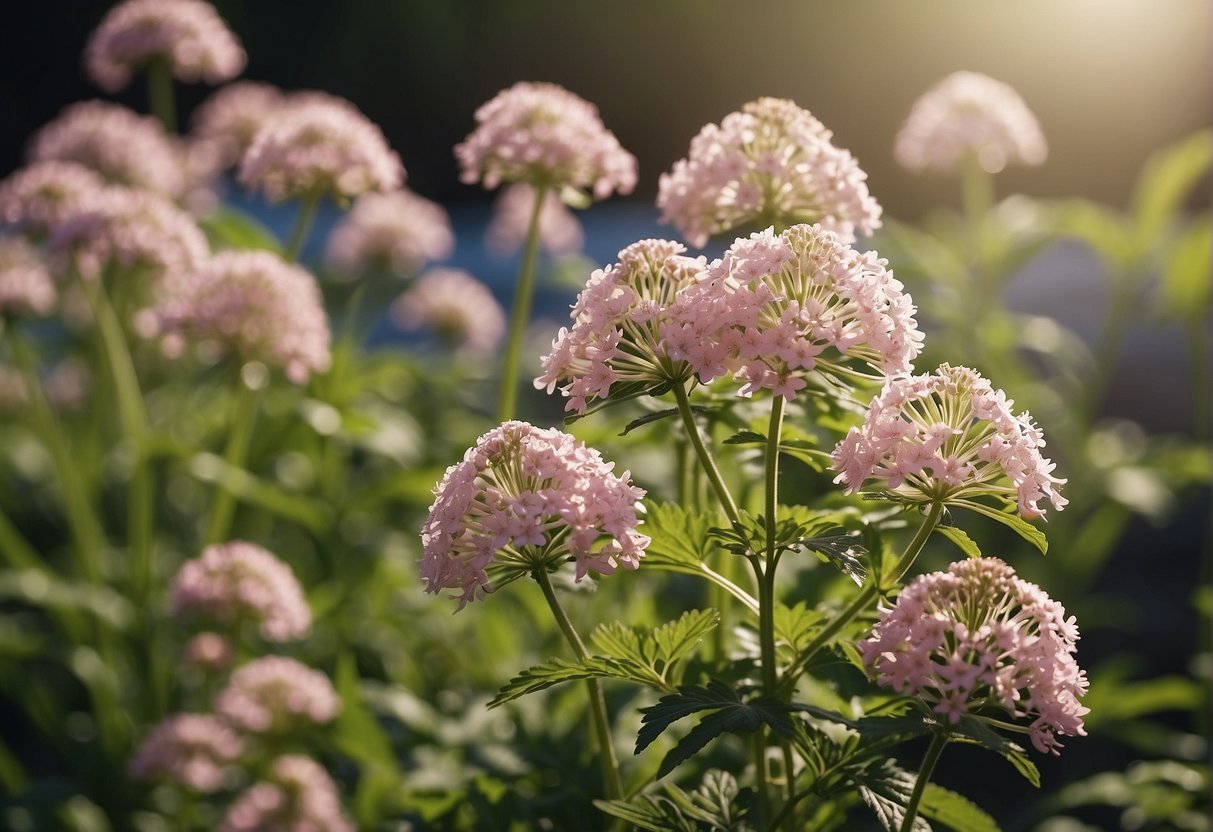
Valerian is a hardy and low-maintenance plant that requires minimal attention. However, to ensure optimal growth and yield, a few basic maintenance and care practices must be followed.
Regular Upkeep
Regular upkeep is crucial for the healthy growth of valerian plants. This includes removing any dead or damaged leaves, stems, or flowers regularly. Deadheading spent blooms is also necessary to encourage new growth and prevent seed production. It is best to do this as soon as the flowers have wilted.
Managing Overgrowth
Valerian plants tend to grow vigorously, and their roots can spread quickly, making them potentially invasive. Therefore, it is essential to monitor their growth and manage overgrowth regularly. To prevent overcrowding, it is best to thin out the plants every two to three years. This can be done by digging up the plants and dividing the root clumps.
Valerian plants are susceptible to root rot and diseases, especially during winter. Therefore, it is crucial to ensure that the soil is consistently moist but not waterlogged. Overwatering can lead to root rot, while underwatering can cause the plant to wither and die.
To maintain optimal soil moisture, it is recommended to water the plants regularly during the growing season. The amount of water required depends on factors such as the rainfall, soil type, and temperature. A seasoned gardener can easily determine the watering needs of their valerian plants.
Adding organic matter, such as compost or perlite, to the soil can help improve its structure and water-holding capacity. This can also provide essential nutrients to the plants.
Valerian plants can reseed themselves, but propagating them through cuttings is also possible. It is best to propagate the plants in spring or fall.
In summary, valerian plants require minimal maintenance and care. Regular upkeep, managing overgrowth, and ensuring optimal soil moisture are essential for their healthy growth. Adding organic matter to the soil and propagating the plants through cuttings can also help improve their growth and yield.
Harvesting and Usage
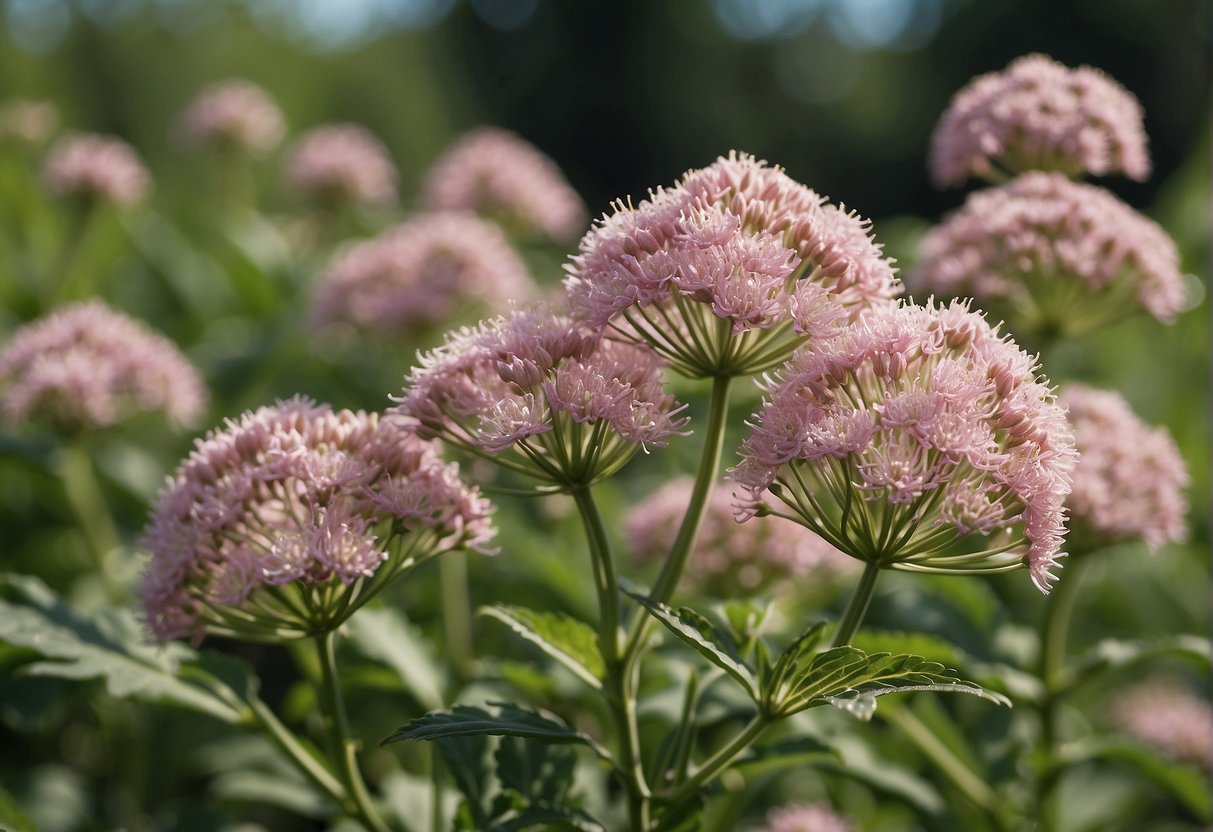
Valerian is a herbaceous perennial that thrives in moist soils. It is native to Europe and Asia, but it can now be found growing in North America as well. Valerian root is the most commonly used part of the plant, and it is harvested in the fall of the second year of growth.
Collecting Valerian Root
When harvesting valerian root, it is important to dig up the entire root system, as the roots can grow quite deep. The roots should be washed and dried in the sun or a warm, well-ventilated area. It is important to handle the roots gently to avoid breaking them, as this can reduce their potency.
Medicinal and Culinary Uses
Valerian root has long been used for its calming properties and is commonly used as a sleep aid. It is also used in herbal medicine to treat anxiety and nervousness. In culinary applications, the root can be brewed into a tea or added to soups and stews for its earthy, slightly bitter flavor.
Valerian root can be dried and stored in an airtight container for later use. It is important to keep the dried roots away from light and moisture to preserve their medicinal properties. When using dried valerian root, it is recommended to soak it in hot water for 10-15 minutes before consuming to release its active compounds.
In addition to harvesting the entire root system, valerian can also be divided in the spring to propagate new plants. Valerian is a hardy plant that can grow in a variety of conditions, but it thrives in moist soils and partial shade.
Overall, valerian is a versatile plant with many medicinal and culinary uses. Its calming properties make it a popular choice for treating insomnia and anxiety, and its earthy flavor can add depth to a variety of dishes.
Frequently Asked Questions

What are the ideal climate conditions for cultivating valerian?
Valerian is a hardy plant that can grow in a wide range of climates. However, it prefers cool temperatures and moist soil. Valerian grows best in areas with a temperate climate, where the temperature ranges from 10°C to 20°C. It can also tolerate light frost and snow.
Can valerian be successfully grown indoors, and if so, how?
Yes, valerian can be grown indoors, but it requires a lot of care and attention. It needs a lot of light and a well-draining soil mix. The best way to grow valerian indoors is to start with seeds and plant them in small pots. Keep the pots in a sunny spot and water them regularly.
What are the steps to propagate valerian from seeds?
Valerian seeds can be sown directly into the ground in the spring or fall. The soil should be moist and well-drained. The seeds should be planted about 1/4 inch deep and spaced about 6 inches apart. Valerian seeds can also be started indoors in small pots and transplanted outside when they are strong enough.
What are the common uses for valerian flowers?
Valerian flowers are often used to make tea, tinctures, and essential oils. They are also used in traditional medicine to treat anxiety, insomnia, and other health conditions. Valerian flowers are also used in perfumes and cosmetics.
Is valerian a perennial plant that regrows each season?
Yes, valerian is a perennial plant that regrows each season. It can live for several years and can grow up to 5 feet tall. Valerian plants die back in the winter and regrow in the spring.
What are the benefits and methods of growing valerian for tea?
Valerian tea is a natural remedy for anxiety and insomnia. To grow valerian for tea, plant the seeds in a well-draining soil mix and keep the soil moist. Harvest the flowers and leaves when they are mature and dry them in a cool, dark place. Once the flowers and leaves are dry, they can be used to make tea.

